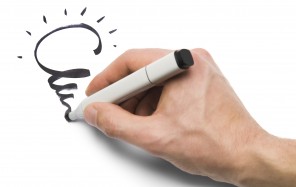75 Energy Efficiency Measures to Lower Your Utility Bill

 This list of energy efficiency measures and projects is a great place to start in determining which activity will have the greatest impact on your building, with your tenants and on your operational cash flow:
This list of energy efficiency measures and projects is a great place to start in determining which activity will have the greatest impact on your building, with your tenants and on your operational cash flow:
- Building envelope improvement
- Weather/infiltration sealing
- Increased insulation
- High performance window replacement
- Low emissivity reflective window film (to reduce unwanted solar gain in the summer and increase the R-value of windows in the winter)
- Lighting
- “Delamping,” i.e. permanently turning off/disconnecting unneeded light fixtures
- “Relamping,” i.e. replacing inefficient light fixtures or lamps with high efficiency fixtures/lamps
- Convert T-12 fixtures/lamps to T-8 or T-5
- Relamp 32 watt T-8 lamps with 28 watt T-8
- Eliminate incandescent bulbs
- Convert all exit lighting to LEDs or switch to photoluminescent signs that require no electricity
- Beware of retrofitting with indirect lighting – while classy looking it may require more fixtures and more wattage
- Increase reliance on task lighting in order to decrease general illumination without adversely affecting productivity
- Improve lighting controls
- Occupancy sensors
- Timers (stand alone or energy management system or EMS-interfaced)
- Daylight harvesting sensors and controls including simple photocells
- Convert outdoor lighting to high pressure sodium
- Eliminate/reduce outdoor decorative lighting
- Consider LEDs for general indoor and outdoor illumination (the technology is almost there)
- Consider outdoor solar powered-LED light fixtures (this technology is also almost there)
- Require white or off-white wall paints for maximum light reflectivity so adequate lighting levels can be achieved with minimum lighting wattage
- When renovating spaces, design new lighting for less than 1.0 watts per square foot
- Boilers
- Replace old boilers with new high efficiency boilers
- Do not oversize replacement boilers
- Retrofit boilers with variable flame burners
- Consider multiple high efficiency modular boilers to improve efficiency by better matching hot water heating loads
- Consider replacing boilers with cogenerators (which also produce electricity)
- Control boiler output water temperature with outside air temp reset so boiler does not need to heat water hotter than necessary
- Retrofit boilers with flue gas/stack heat recovery
- Chillers
- Replace old chillers with new high efficiency chillers whose efficiency curve best matches your load profile
- Do not oversize replacement chillers
- Operate at peak efficiency (by adjusting water flow, load, condenser/evaporator water temps, etc.)
- Replace old cooling towers with new high efficiency towers
- Air conditioning
- Replace older AC equipment with maximum efficiency models
- Discontinue use of inefficient window units
- Reduce AC operating hours
- Turn off reheats and stop controlling humidity levels during the cooling season
- Clean cooling coils on a regular basis
- Maximize use of “free cooling” with economizer cycle
- Use open windows and passive cooling when mechanical air conditioning is not needed
- Close windows when air conditioning is in operation
- In dry climates consider evaporative cooling
- In humid areas consider desiccant cooling
- Temperature control
- Reduce temperature settings in winter
- Increase temperature settings in summer
- Maximize night, weekend and holiday temperature setbacks
- Install tamper proof or remote thermostats
- Control space temp remotely by EMS
- If occupant controlled thermostats are required, then limit range of adjustment to ensure campus temperature policy compliance
- Motors, fans and pumps
- Adjust operating schedule to minimize run hours (review and update periodically)
- Replace old motors, pumps, and air handling units with high efficiency
- Control motors serving fans and pumps with variable speed drives (VSDs)
- Operate VSDs at maximum acceptable turn-down; vary by time of day and occupancy; also vary by season
- Convert constant volume fan system to variable air volume
- Reduce outside air volume during morning warm-up cycle and where/whenever possible through damper settings and demand control ventilation
- Reduce needless pumping by eliminating three-way by-pass valves
- Laboratory Ventilation and Fume Hoods
- Switch to a “green chemistry” teaching program that doesn’t require fume hoods
- Turn off 100% outside air ventilating systems whenever possible, e.g. in teaching labs whenever classes are not in session; shut down or slow down related supply fans
- Decommission/remove unneeded fume hoods and reduce fan system outside air volume
- Eliminate unneeded fume hoods by using ventilated storage cabinets instead of hoods for chemical storage
- Retrofit constant volume fume hood ventilation systems to variable air volume
- Retrofit conventional fume hoods with low-flow hoods and reduce outside air volumes
- Retrofit these systems with heat recovery
- Heat recovery
- Run around loops
- Heat wheels
- Heat pipes
- Desiccant wheels
- Air-to-air heat exchangers
- Install heat recovery
- Energy Management Systems (EMS)
- Switch to direct digital control (DDC) systems
- Purchase EMS systems which are easy to program (so programming capabilities will be fully utilized by facilities staff)
- Utilize and optimize use of EMS energy conservation programs, e.g.
- Optimal start/stop
- Night setback
- Demand shedding
- Remote programmed lighting control
- Fuel Switching
- Consider converting electric space and water heating to natural gas
- Energy Intelligence & feedback systems
- Accessible display units that show energy use and savings can have dramatic results in energy use behaviors
